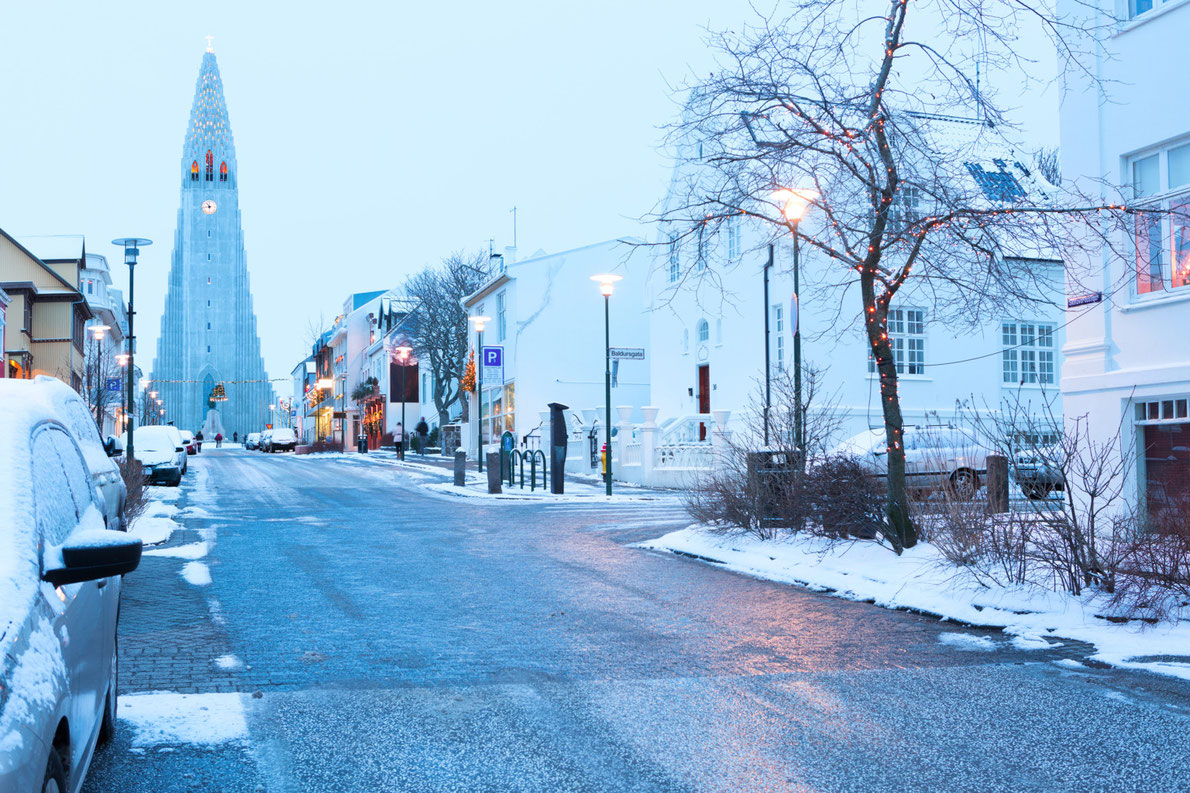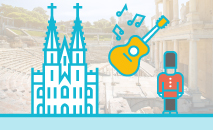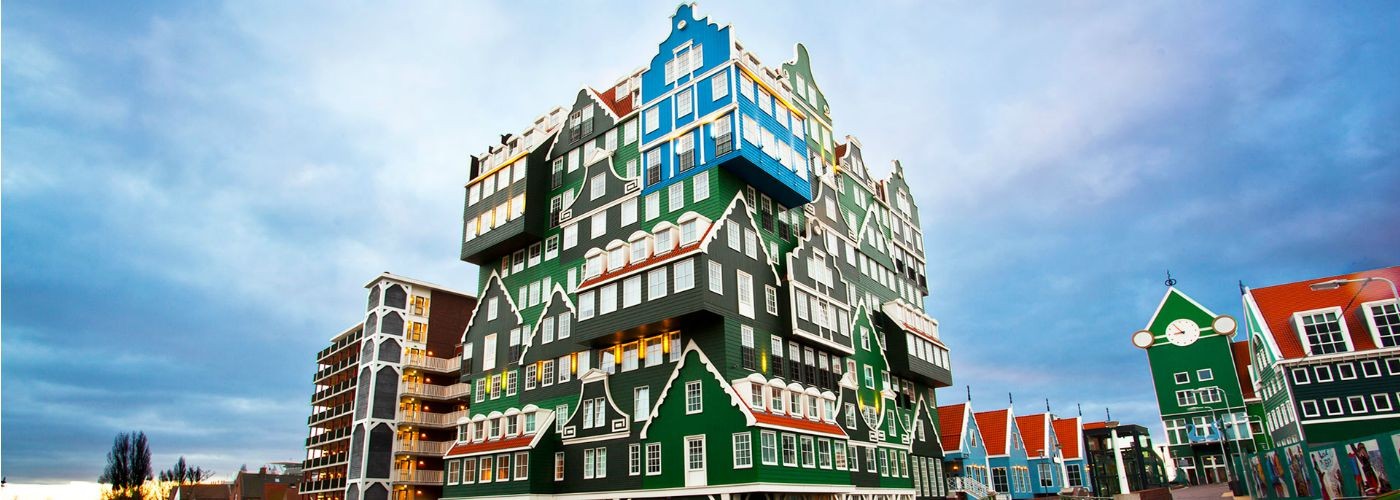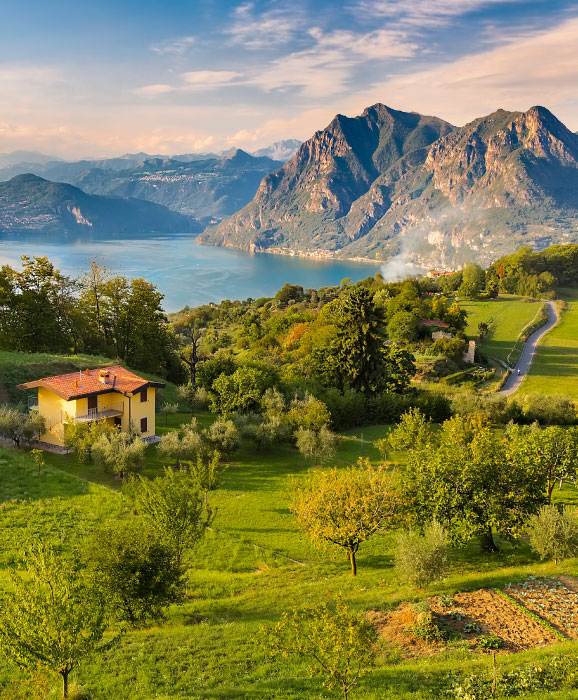The most amazing monuments in Europe
Here is a selection of the most amazing monuments in Europe, the top incredible monuments, discover the Atomium in Brussels, the Hallgrimur church in Reykjavik, the Cristo Rei in Lisbon, the Palace Bubbles near Cannes or the Cubic House in Rotterdam, the strangest and most amazing monuments in Europe.
Book your hotel, guesthouse, hostel or B&B at the best price guaranteed as well as your best activities in Europe.

1. The Atomium
Brussels - Belgium
“The story of the Atomium is, above all, one of love, the love that the Belgians have for an extraordinary structure symbolising a frame of mind that wittily combines aesthetic daring with technical mastery. The appearance of the Atomium is unusual and unforgettable. It has a rare quality of lifting everyone’s spirits and firing their imagination ». Diane Hennebert, 2008 (©atomium.be).

2. The Church of Hallgrimur
Reykjavik - Iceland
State Architect Guðjón Samúelsson's design of the church was commissioned in 1937. He is said to have designed it to resemble the basalt lava flows of Iceland's landscape. It took 38 years to build the church. Construction work began in 1945 and ended in 1986, the landmark tower being completed long before the church's actual completion. (©CC).

3. The Cristo Rei
Lisbon - Portugal
The idea to build the Monument to Christ-King comes up in 1934, when the late Cardinal Patriarch of Lisbon, His Eminence Manuel Gonçalves Cerejeira, is visiting Brazil. Traveling through Rio de Janeiro, he comes upon the impressing site of the Statue of Christ the Redeemer in Corcovado and immediately is born in his heart the desire to build something similar in front of Lisbon. So, in 1936, the idea to build the Monument to Christ-King was made known to the Apostolate of Prayer, which welcomed it with enthusiasm. (©cristorei.pt).

4. La Sagrada Familia
Barcelona - Spain
The expiatory church of La Sagrada Família is a work on a grand scale which was begun on 19 March 1882 from a project by the diocesan architect Francisco de Paula del Villar (1828-1901). At the end of 1883 Gaudí was commissioned to carry on the works, a task which he did not abandon until his death in 1926. Since then different architects have continued the work after his original idea.
The building is in the centre of Barcelona, and over the years it has become one of the most universal signs of identity of the city and the country. It is visited by millions of people every year and many more study its architectural and religious content. (©sagradafamilia.cat).

5. Pena Palace
Sintra - Portugal
The Pena National Palace is a Romanticist palace in São Pedro de Penaferrim, municipality of Sintra, Portugal. The palace stands on the top of a hill above the town of Sintra, and on a clear day it can be easily seen from Lisbon and much of its metropolitan area. It is a national monument and constitutes one of the major expressions of 19th-century Romanticism in the world. The palace is a UNESCO World Heritage Site and one of the Seven Wonders of Portugal. It is also used for state occasions by the President of the Portuguese Republic and other government officials. (©CC).

6. Facteur Cheval Palace
Hauterives - France
"I was walking very fast when my foot caught on something that sent me stumbling a few meters away, I wanted to know the cause. In a dream I had built a palace, a castle or caves, I cannot express it well... I told no one about it for fear of being ridiculed and I felt ridiculous myself. Then fifteen years later, when I had almost forgotten my dream, when I wasn't thinking of it at all, my foot reminded me of it. My foot tripped on a stone that almost made me fall. I wanted to know what it was... It was a stone of such a strange shape that I put it in my pocket to admire it at my ease. The next day, I went back to the same place. I found more stones, even more beautiful, I gathered them together on the spot and was overcome with delight... It's a sandstone shaped by water and hardened by the power of time. It becomes as hard as pebbles. It represents a sculpture so strange that it is impossible for man to imitate, it represents any kind of animal, any kind of caricature. I said to myself: since Nature is willing to do the sculpture, I will do the masonry and the architecture" Ferdinand Cheval. (©facteurcheval.com).

7. Pisa Tower
Pisa - Italy
The Leaning Tower of Pisa is the campanile, or freestanding bell tower, of the cathedral of the Italian city of Pisa, known worldwide for its unintended tilt to one side. It is situated behind the Cathedral and is the third oldest structure in Pisa's Cathedral Square (after the Cathedral and the Baptistry. The tower's tilt began during construction, caused by an inadequate foundation on ground too soft on one side to properly support the structure’s weight. (©CC).

8. Inntel Hotel Zaandam
Amsterdam - Netherlands
This visually stunning 4 star hotel has an impressive façade. The structure is a lively stacking of various examples of the traditional houses to be found in the Zaan region. Inntel Hotels Amsterdam Zaandam offers superb rooms, a Wellness Club with swimming pool and free WiFi throughout. In short, it provides the best of tradition combined with modern-day comfort. It is the ideal location for your overnight stay as well as for meetings, conferences or stylish celebrations. (©inntelhotelsamsterdamzaandam.nl).

9. Royal Pavilion
Brighton - UK
Welcome to an extraordinary and extravagant pleasure palace.Built for the Prince Regent, later King George IV, in stages between 1787 and 1823, the Royal Pavilion is remarkable for its exotic oriental appearance both inside and out. This magnificent royal pleasure palace was revered by fashionable Regency society and is still a distinctive landmark for vibrant Brighton & Hove today. The Royal Pavilion is also home to some of the finest collections and examples of the chinoiserie style in Britain. (©brighton-hove-rpml.org.uk).

10. The Bubbles Palace
Nice - France
The of the Bubbles Palace architect wanted a return to roots, ancestral habitats, caves, troglodyte habitat ... A place where art and expression of beauty, flexibility, balance and harmony unleash imagination. Everything from floor to ceiling, from outside to inside, has spherical shapes. The palace was acquired after the death of Pierre Bernard by the famous designer Pierre Cardin.

11. The Guggenheim
Bilbao - Spain
Instantly hailed as the most important structure of its time, Frank Gehry’s Guggenheim Museum Bilbao has celebrated more than a decade of extraordinary success. With over a hundred exhibitions and more than ten million visitors to its credit, the Guggenheim Museum Bilbao has changed the way people think about museums, and it continues to challenge assumptions about the connections between art, architecture, and collecting.

12. The Forest Spiral
Darmstadt - Germany
The Waldspirale is a residential building complex in Darmstadt, Germany, built in the 1990s. The name translates into English as forest spiral, reflecting both the general plan of the building and the fact that it has a green roof. It was designed by Austrian artist Friedensreich Hundertwasser, planned and implemented by architect Heinz M. Springmann, and constructed by the Bauverein Darmstadt company. The building was completed in 2000.” (©CC).

13. The Guillemins station
Liege - Belgium
The new station by the architect Santiago Calatrava was officially opened on 18 September 2009, with a show by Franco Dragone. It has 9 tracks and 5 platforms (three of 450 m and two of 350 m). All the tracks around the station have been modernized to allow high speed arrival and departure.
The new station is made of steel, glass and white concrete. It includes a monumental arch, 160 metres long and 32 metres high. (©CC).

14. The Cube Houses
Rotterdam - Netherlands
The cubehouse (or polehouse or treehouse) is a design of the Dutch architect Piet Blom. He thought of this design as an (abstract) tree and of the Total complex as a wood. So Blom’s idea was to create a kind of village within a town, a safe oasis where several functions could take place : Smallscale business, shops, a school and a children’s playground. The strong interaction between the private (upstairs) and the public (downstairs) is characteristic for this situation. The complex is in fact a pedestrian bridge crossing a traffic artery. (©kubuswoning.nl).

15. Stone House
Fafe - Portugal
“Constructed between two giant stones and linked with a concrete mix, the house is rumored to be inspired by the popular American Flintstones cartoon. Although quite unusual, the prehistoric-looking residence does feature some traditional components such as windows, a front door, and even a shingled roof. As you might expect, the house’s design attracts thousands of tourists each year ». (©Karen Cilento).

16. Dunmore Pineapple
Airth - Scotland
"The Dunmore Pineapple, a folly ranked as the "most bizarre building in Scotland", stands in Dunmore Park, near Airth in Stirlingshire, Scotland.
Discovered by Christopher Columbus on the Caribbean island of Guadeloupe in 1493, pineapples became a rare delicacy in Europe, with associations of power, wealth, and hospitality. Architects, artisans and craftsmen adopted the pineapple as a motif, sculpting it into gateposts, railings, weather vanes and door lintels. The motif also featured prominently in interior decoration, fabrics and furniture. The Dunmore Pineapple represents perhaps the most spectacular architectural use of the motif." (©cc).

Plan your trip to Europe
-
Hotels, Apartments, B&B...
Fresh deals every single day
Thousands reviews you can trust
-

Tours, Sightseeing & Activities
Discover Europe’s biggest collection of things to do and guided tours.
Whatever you want to do you’ll find it here.
Best in Europe.
Your ultimate bucket list to travel in Europe





















































